
What’s it like living in Mazatlán?
I love this interview.
Chuck has lived and travelled around Mexico for the last 50 years. He knows the country and isn’t shy to tell you what he thinks of the misconceptions, sensationalism and fearmongering spread in the media around safety in Mexico.
Chuck has also visited more Pueblo Magicos (65) than anyone I’ve ever spoken to. He loves them and has ventured in different pockets of the country (usually by bus), visiting many of its most beautiful towns.
All the above in this interview. Grab a beer because it’s a long one…
——————————————–
Hi Chuck! Can you please tell us about yourself? How did you end up deciding that you wanted to leave the US and live in Mexico?

I have traveled all over Mexico with a backpack many times and continue to do so today nearing my seventy-third birthday. I have visited countless beautiful and interesting places, but Mazatlan has always remained central in my heart.
I’ve always traveled and, even with Kathy working, would spend four to six months travelling by myself around Thailand, Bali, India or Mexico. From 2003 to 2017 I alternated winters between Southeast Asia/India and Mazatlan. Then with Kathy nearing retirement, we bought our little heaven on the beach. I love authentic Mexico and parts of Mazatlan are too Gringo for my taste. It is, however, peaceful and tranquil and on a gorgeous beach. Kathy loves it here. She doesn’t speak Spanish and with two knee replacements cannot and does not want to travel the way I do. But okay. As they say, happy wife, happy life.
We generally move around according to seasons. I would be happy to live year-round in Mexico, but Kathy has trouble with the heat, humidity and mosquitos of the summer months. So we spend early June to late September in the Pacific Northwest. The weather and hiking are great and I am a fanatical disc (frisbee) golf player (a sport not available in Mexico, where I am instead a fanatical tennis player). In the fall when the weather is lousy up north, and still hot, wet and humid in Mazatlan, I used to make the long hop to SE Asia for a couple of months pre-pandemic. The last two years I have spent that time busing around Mexico visiting Pueblos Magicos (Magic Towns). So I’ve been in Mexico eight+ months of the year in recent years.
I have my Permanent Residency in Mexico and can come and go as I please. In the US I hide out from the hustle, bustle and political divisiveness of contemporary American life. I hike, play disc golf, and as much as possible hide out in the back yard at the edge of the woods, reading in the afternoon summer sunshine au natural (I did come of age on the free beaches of Santa Cruz). Each year my Spanish edges closer and closer to total fluency and I feel a little more Mexican and a little less American. Who knows what the future will bring?
Editor’s note: Chuck is the author of 3 books available on Amazon. They’re Full Moon on the Ganga, The Gold Star, The China Girl. He also has a brand new book on the Pueblos Magicos of Mexico.
So why Mazatlan? What is so special about it?
Mazatlan is no longer any kind of a secret. It is growing more popular, more crowded, real estate prices are exploding. The costs in foreigner-oriented businesses are increasing also. But anything I write here is not going to put the toothpaste back into the tube. And I have witnessed boom and bust cycles since the seventies. Undoubtedly there will be more.
Mexican government statistics show that over 90% of foreign visitors never set foot outside of a resort destination (this does not include border towns like Tijuana, which are an entirely different question). Is Mazatlan one of them? The answer is yes and no, but mostly no. Puerto Vallarta was a sleepy fishing village before the film Night of the Iguana. There wasn’t even a road into it. Its growth has always been fueled by tourism and tourism only. There are many similar locations: Cancun, Cabo San Lucas, Huatulco, Zihuatanejo/Ixtapa. All of these were developed by the government in order to bring in tourist dollars, one of the three pillars of the Mexican economy along with oil and remittances.
Mazatlan is a different kind of animal. It had been a Spanish colonial city for centuries. It sports the largest port and bay between Panama and Long Beach, California. It is a big working city. It is the main nexus of the shrimping industry. And yes there is a large infrastructure devoted to tourism. But it is not the main attraction, just a sideline benefit. This is not a big tourist destination. Cruise ships dock here and there are a handful of all-inclusive resorts on beautiful beaches. But there is only one hostel for budget travelers, a great one called The Funky Monkey. And most of the tourism here is aimed at nationals, who pour out of the big mountain cities for a vacation on the beach.
We have a significant North American population (us smart ones). Most of them are elderly snowbirds who come down for one, two, three or four months every year. Our beach area Cerritos, six miles north of the city center and a couple of miles north of the tourist area called the Golden Zone, is a primarily Gringo residential center. Most of the people here don’t speak Spanish and are not particularly interested in Mexican people or culture. They stick to restaurants that cater to them. They like the weather and low costs. As I have said, none of this is my cup of tea. But I can get on the local bus that passes every few minutes or hop on my bicycle. It takes me little time to find the real Mexico. Which means I can have my cake and eat it too.
There is a much smaller population of year-round visitors and their personal stories are legion. They tend to be less affluent, more artistic and of the intelligentsia, a somewhat younger crowd which includes remote workers and their families. This cohort most commonly live in the beautiful Historic Center with its lively art, music, opera, fine dining, markets and authentic dining scenes, and where there is always something happening. There are pretty beaches there too, just smaller, and like me, those who live in Centro can hop on the bus and get away from it all.
The list of what this place has to offer is endless. Even though there is a large population it feels more like a spread-out small town than a big city. No skyscrapers or modern business district. Traffic is a real pain, like almost everywhere, but here because there are few feasible routes between the ocean and the estuaries. And everything funnels into the Centro which is packed into a small peninsula like San Francisco. Most North Americans seldom stray from the coastal strip, which increases the small-town feel. You are always bumping into people you know.
There are miles and miles of beautiful beach. From the northern point of our district at Playa Bruja (Witch Beach, a major surfing hangout), the beach continues twelve miles to South Beach. And then you can take an inexpensive water taxi to Stone Island where there are miles more. Farther north of Emerald Bay, otherwise known as New Mazatlan, there are many miles of mostly deserted beach, full of birds.
We love the Malecon (Boardwalk) which connects the Golden Zone with South Beach, a distance of almost four miles. It is one of the most beautiful urban walks anywhere in the world. In the cool morning hours it is full of strollers, dedicated walkers, joggers and roller bladers. Beside it is a great and safe bicycle lane. In the evening the area is crowded with families, taking in our world class sunsets. Right off the coast are the famous Tres Islas (Three Islands) which frame these magnificent vistas. In the morning the sun rises all pink and orange behind the Centro. In the evening the golden sunset shines off it. I have been a lot of places in my life and as far as I am concerned there is nothing quite like the Mazatlan Malecon.
There is great dining for the rich and poor alike. Shrimp are two to three dollars a pound depending on size and there is a great variety of fish and other seafood. There is a famous opera and performing arts theater, the Angela Peralta. There are museums, gorgeous colonial architecture and a gentrified historic district with beautiful renovated homes bursting with flowers. There are a plentitude of markets. The whole downtown is a strollers paradise, small, colonial and relaxed, full of small merchants. Farther out are a number of state-of-the-art malls spotless and gleaming, far more attractive than many of their US counterparts. We watch first run movies like Everything Everywhere All at Once (subtitles in Spanish) in the technologically advanced multiplexes with stadium seating. Senior entry runs about $2.50. Public transportation is abundant and cheap, numerous bus lines, taxis, pulmonias (open air taxis), Uber and Didi at tiny prices. You don’t need a car here and many people feel they are more hassle than they are worth. We are surrounded by many beautiful small towns, notable for their history, architecture, nature activities and friendliness.
And don’t forget the climate, which is superlative. From Mid-November into June, it is dry, warm and sunny (but even the clouds are gorgeous and make for spectacular sunsets). Daytime temperatures rarely vary, between 70 and 80 degrees Fahrenheit, with nights from 50-60. As summer approaches it does get into the eighties. But along the beach there is usually a cooling breeze. The rainy season is hot, humid and full of thunderstorms, even occasional hurricanes. But I know plenty of people that live here year-round, who say it is pretty much like Florida and Louisiana. None of that is for Kathy, and she insists that there are tons of mosquitoes. Her fault, she is way too sweet. I rarely notice them and they don’t care for me either. Having spent many winters in SE Asia, I am sure that the Mazatlan summer would not faze me. Someday, maybe.
I could go on with the joys of living here, but I think you have the picture.
What is it about Mexico and Mexicans that you love?
All my answers are generalizations. People are people and they vary individually everywhere.
But generally, Mexicans are honest, courteous and respectful, particularly respectful of family, older people and especially families with children. They are far slower and more relaxed than Gringos and also patient. They wait in line without complaint chatting with their companions. Life is outdoors here, and if you pass someone you know they greet you invariably. Mexicans are friendly, hospitable and helpful – sometimes too helpful as they don’t like to say no or admit that they don’t know the answer to your question. Mexicans are not childish or petty, but they are often childlike. They joke, laugh and roughhouse, and call out loudly without inhibition at any time of day or night. They love loud blaring music and fireworks and parties (not me, I am an old fogey, but I’m lucky to live on a quiet beach). They are generous. When I rode the old trains forty-plus years ago, poor peasant mamas would insist on sharing their family beans and tortillas with me. Mexicans often refuse compensation when they do you a favor. Mexicans don’t like to think too hard. They don’t read many books or do puzzles. They prefer to party, chat and gossip. They are not much interested in serious world affairs. But don’t think the young people are not educated: education is highly prized and modern people are quite sophisticated when they need to be. Mexicans are very hard working, they have to be. But it is slow. They pause for joking and chatting. My dentists and hygienists sing while they clean my teeth. Enchanting. It can be frustrating here. Some contractors do beautiful and precise work at low prices, some are lazy and shoddy. Some people show up on time. Others never think of it. Time is a flexible concept here. And so much of this is random. Just because something is a rule in one place, it doesn’t mean much a mile away. Many North Americans get extremely frustrated about this facet of life here. I love it all, even when I hate it. If you can’t handle it, don’t live in Mexico.
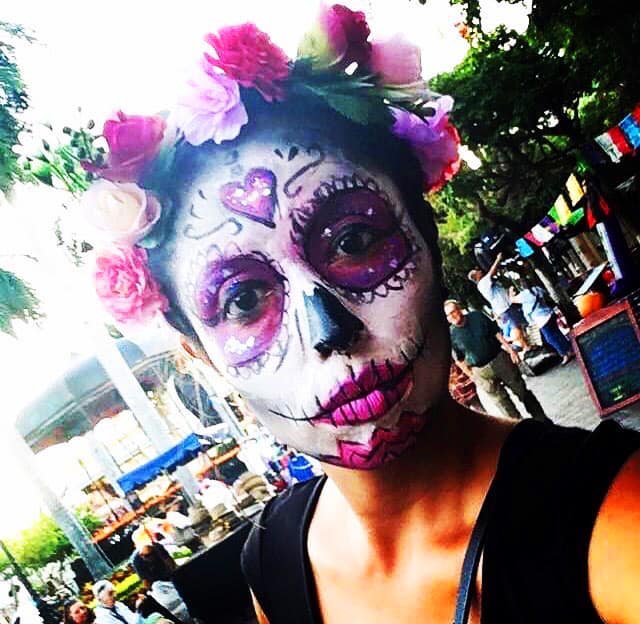
A few random items. Bureaucracy can be rigid and inflexible and time consuming. Also inconsistent. It seems like the rules here are different than in La Paz where my daughter lives. The Mexicans like to shake their head and say “ni modo,” what can you do? Medical care is amazing. Modern, clean, attentive, professional and very inexpensive. Hardly any paperwork or waiting for appointments. That is for the basic stuff, teeth, eyes. More serious stuff is outside my purview, as I have never needed any of it, but many people speak favorably. All this spills over into personal services, beauty and hair, manicure and pedicure, massage. It’s all great and it’s all cheap.
Let’s turn to sports, which is important to many. It is all here: swimming, surfing, kayaking and fishing. Tennis and pickleball. Lots of golf courses. More and more bicycle lanes each year. Birdwatching. Just walking on the beach with so much to see (and I’m not talking about Mexican girls wearing what they call bathing suits these days, much more bathe than suit). We also have our Mazatlan Venados, proud members of the Pacific Coast League which is more or less the equivalent of Triple A Baseball.
Note: The inhabitants of Mexican cities have nicknames. Those from Guadalajara are Tapatios, from Monterrey, Regios or Norteños, from Vera Cruz, Jarochos, and from Mexico City somewhat pejoratively, Chilangos. Mazatlecos are Pata Saladas, literally salty paws.
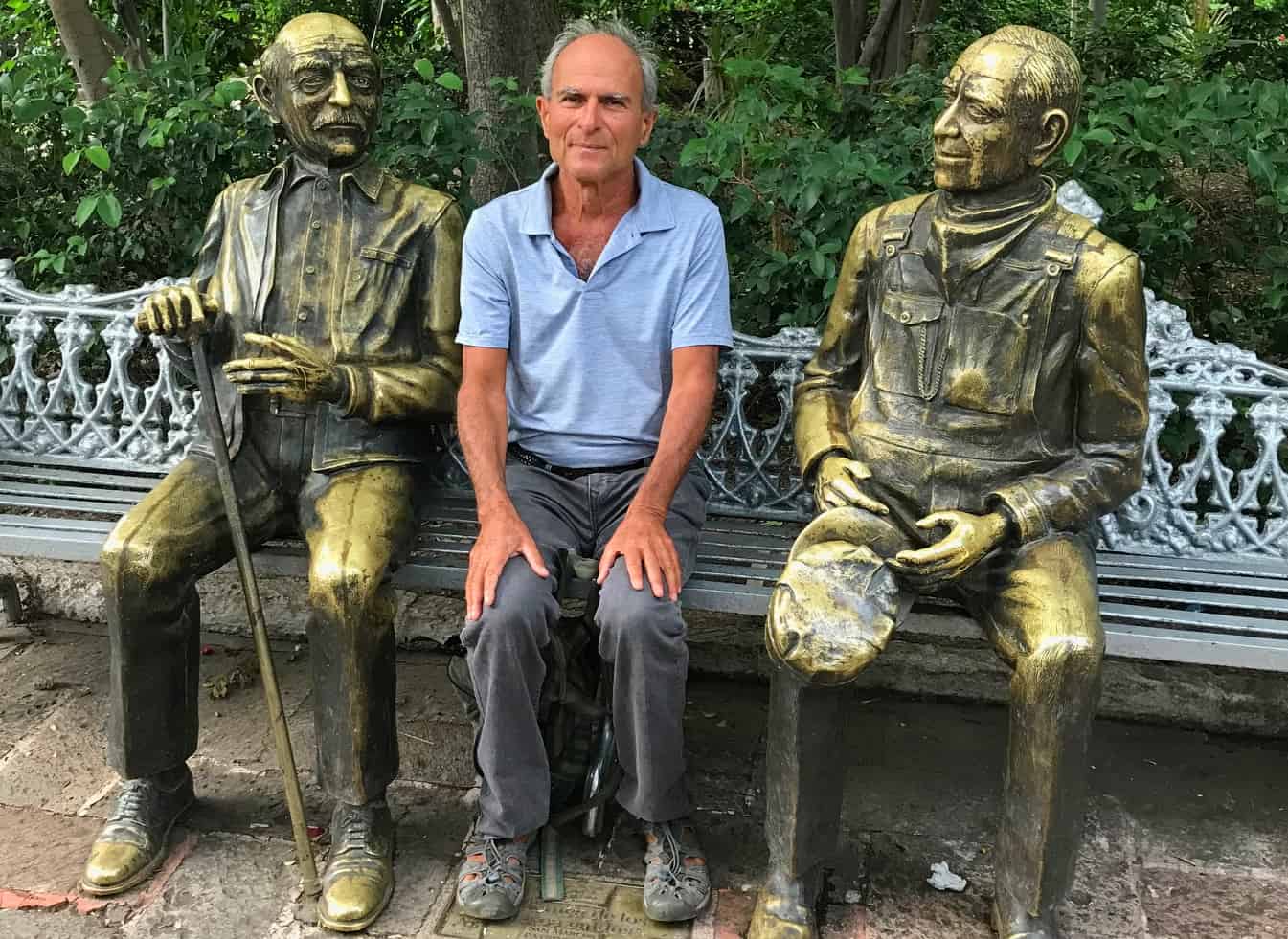
You’ve spent a lot of time in Mexico. I’d love your perspective on safety and security. Has anything every happened to you?
The following are my personal opinions and should be taken as such. A week or so ago there was a shooting and kidnapping of US citizens crossing into Matamoros for purposes of medical tourism – something that is done by multiple thousands of Americans every year without incident. Here we have the hypocrisy of the news media on full view. If it is spectacular, showy and violent it is given pride of place. It draws viewers and readers. And it continues to give the American public a hugely distorted picture of the reality of life in Mexico.
Returning to this incident. 1) Violence like this happens routinely all over the United States every single day. In fact, it is so common and routine that an incident needs to have a big hook to make the national news. Does this mean one should avoid ordinary travel in the US? Of course not. 2) By all accounts this incident was a fluke, a case of mistaken identity and a classic case of being in the wrong place at the wrong time. The response by the Cartels was extremely instructive. They trussed five perpetrators by a vehicle carrying a message of apology, waiting to be arrested. They want Americans to know that the Cartels have no interest in messing with tourists. We are their customers. They have hundreds of millions of dollars to launder and their first choices are resorts, condo buildings, fancy hotels and restaurants. The last thing they want to do is discourage tourism. And the Mexican government is on the same page. The bottom line is that if you are a light-skinned (generally older) North American visitor to Mexico you are a protected species. Nobody wants anything to happen to you.
I have traveled all over this country for nearly fifty years. The worst that has befallen me is petty theft, which can happen anywhere. Watch your stuff. Otherwise, I have never once felt afraid or threatened. I have had uncomfortable moments with drunks. Keep away from them. Otherwise Mexicans are kind, courteous, friendly, helpful and non-violent. There is some horrendous violent crime in Mexico and the statistics are chastening. Digging deep into them, you will find that a very high percentage are due to Cartel conflict and turf wars. Unless you are stupid or extremely unlucky – like the Matamoros victims – you need not worry. Small town Mexico is extremely safe and peaceful. People do not have guns. There is a visible local police presence. Everybody knows each other. Even here in a large city like Mazatlan, we feel safe always. And yes, we don’t visit poor districts at night. (Actually we are old and hardly go anywhere at night 😊 ).
One of the most egregious spreaders of scary propaganda regarding Mexico are the State Department Travel Advisories. I read them and just scratch my head. As far as I am concerned they are fiction, evoking kidnappings, carjacking and violence which is far more common in the US than in Mexico. As an example they advise avoiding all travel in my home state of Sinaloa outside of Mazatlan. WTF! I have been traveling to small towns all over Sinaloa forever and have never experienced one single unpleasant incident. Furthermore, there is a large community of North Americans and snowbirds here. If this were happening regularly we would all hear about it, guaranteed. But we don’t, which is pretty much proof that it isn’t. Google kidnappings in Mexico and you will be linked to a frightening article. After you read it, please notice who wrote it. Yes, a personal security company offering bodyguards. Enough said. To wrap this up: there are very dangerous places in the US like East Los Angeles, Detroit, Chicago, Baltimore etc. or at least parts of them. If you don’t know your way around keep away. The same is true for a few places in Mexico: parts of border towns, some northern cities, other places where the Cartels are having turf wars. The horrendous and despicable novel American Dirt has a scene where the Cartels are blocking a national highway and shaking people down. Pure fiction. I have traveled by bus all over the country since 1975 and still do, and have never heard of this. Buses have been held up in rural areas at night. This is freelance activity, and likely not Cartel who have bigger fish to fry. 1) if you drive around Mexico in an expensive luxury vehicle, stay on the toll roads and don’t drive at night. 2) Don’t go around with expensive watches and jewelry wearing flashy clothes. 3) keep your money hidden and keep it inside your clothes in crowds. 4) Don’t wander around drunk at night. 5) Use common sense. Almost all of this beautiful country is safer than the US. Relax.
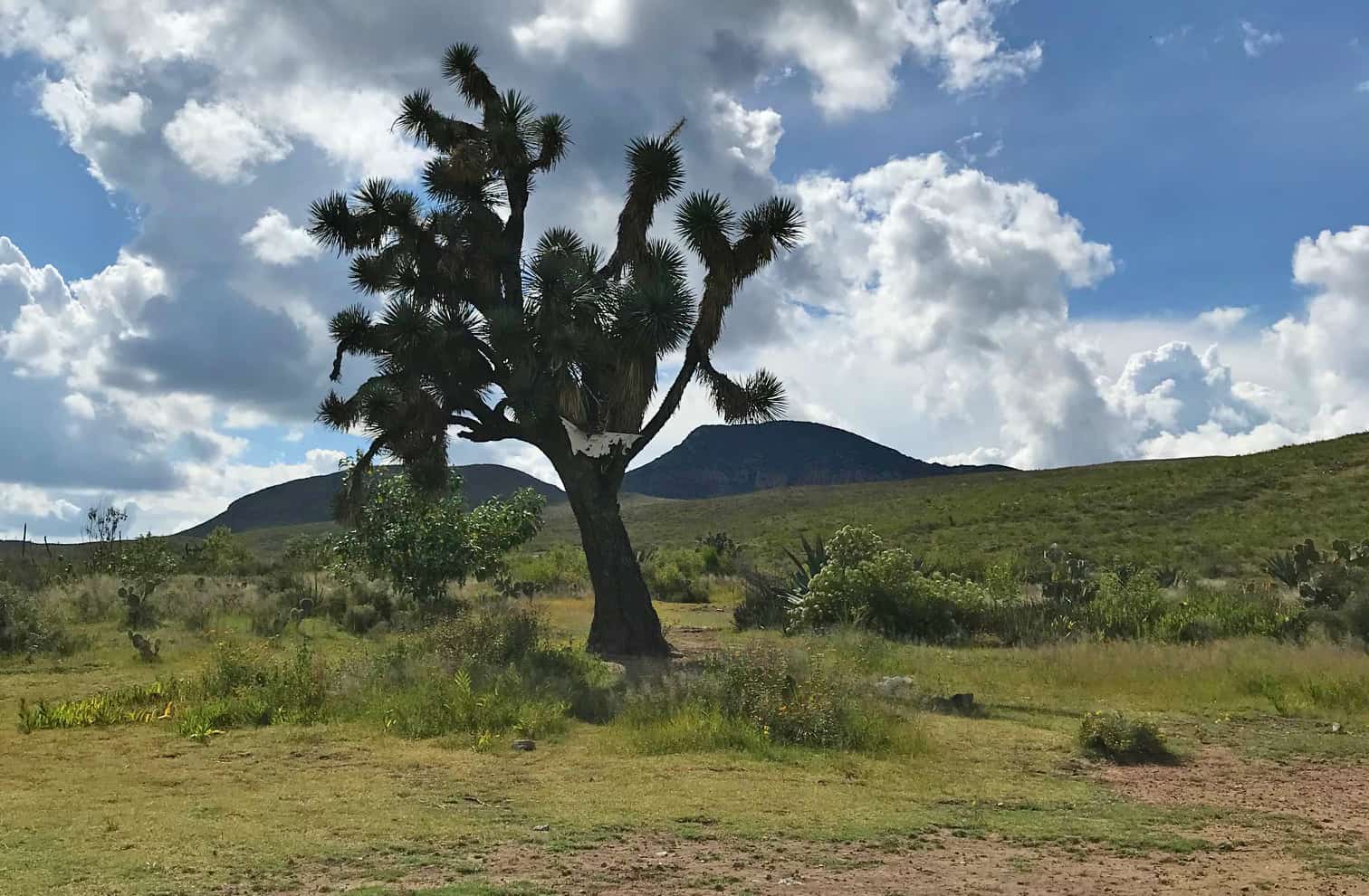
If you had to give readers advice: what do you people get wrong or don’t know about Mexico (that they should know)?
What do people get wrong about Mexico? Well, since most of us get our information from sensationalistic media, the answer is almost everything.
Mexico is a failed narco-state. No. There are many problems associated with the Cartels, but that is just a small slice of the Mexican story.
Mexico is corrupt. No more than anywhere else or the United States. The wealthy oligarchies thrive on corruption everywhere.
Mexico is violent and dangerous. Most of the country is more peaceful and crime free than much of the United States. I have already written about this at length. Right or wrong, common Mexicans have no access to guns.
Mexico is poor. There is plenty of poverty in Mexico. There is also way too much poverty in the United States. Next question.
Mexicans are lazy and like to sleep beneath cacti. Oh, come on. You’ve been watching too many old movies.
Mexican police are corrupt and sinister with big, scary mustaches. Too many movies again. I have had many dealings with Mexican authorities over the years and they are invariably courteous. Which is a lot more than I can say about US Customs and Immigration as a small, brown-skinned man.
Mexicans are uneducated and unsophisticated. No and no. And they know far more about our country than we know about theirs.
Mexicans want to come to the US. Absolutely false. Most Mexicans come north because they are desperate to make some money and feed their families. To do this they must leave everything they know, family, friends, community, music, food, language and make a long, hard, dangerous and expensive journey to a dark, cold place where they don’t speak the language and are feared and despised by too many people. Do you think people really want that? The fact is that most Mexicans who make it to the United States mostly dream about going home, just the same as most of us would. Not me, though. The fact is that the great majority of Mexicans do not want to go north. Honduras, Guatemala, El Salvador, Haiti and Venezuela are a little different. These are truly countries in existential crisis. Mexico is not.
Mexico is dirty. Actually most Mexican towns, particularly in the mountains, are much cleaner and litter free than their American counterparts.
What’s your average day like in Mazatlan like Chuck? How do you keep busy?
How do I spend my days? I am retired, so the easy answer is that I do what I feel like. But my schedule will probably not mean much to you. Everybody is different with different likes, dislikes and priorities.
Kathy has a lot of little projects going and likes to be busy. I don’t like to have anything that I have to do and hate being busy. That does not mean I sit around watching TV, reading junk, drinking and engaging in empty social chatter like so many of the retired people around here. The thought of that makes my skin crawl. I don’t converse much with that crowd, but have a few more interesting friends who I do spend time with. I also know all the maids and staff in our complex and make sure to speak some Spanish every day. There is always room to improve. I like to be active and I love to feel my body moving. One thing I can say is that my days race by. Where does the time go? Here is a typical day without any outings or extra curricular activities or eating out. I’m not sure if there are really any whole days like that, but it is a model.
- I am generally up between six and six thirty. It is cool and quiet. I do some yoga, deep breathing and stretching exercises for about five to seven minutes, then my morning bathroom routine. Make my bed and throw on some clothes, as few as possible depending on the temperature. Downstairs I have a few mouthfuls of fruit juice. I pause on the front porch (on the fifth floor) to watch the sky filling with color, a different panorama every day. For the next ten minutes I walk the floor perimeters in a sequence that takes me up the side stairs to the ninth floor, around, up, down, around, up, down.
- Then down to the bottom and out to the beach. Twenty minutes of beautiful brisk walking later, it is back home. Make a cup of coffee and drink it inside or out depending on sun and weather while reading the New York Times on my iPad. Some mornings there is a tennis game on our crumby clay courts by the parking lot at seven-thirty, some not. I make some breakfast in the middle of the newspaper reading process or after the tennis. It is also the most common meal to eat out. We have a restaurant in our building and there are plenty of good local places in the vicinity.
- Many Saturdays we head to the Centro and eat with the Mexicans upstairs at the main market, then visit the organic fruit and vegetable and arts and crafts market at Zaragoza Plaza. Otherwise Kathy’s meals and smoothies are generally different than mine. Dinner is the meal we almost always share. Neither of us do a real lunch. Three mornings a week she does water aerobics in our pool and enjoys the jacuzzi with her friends. She shops with friends, or hangs out in the condo with our cat Samantha aka Velcro and does projects or reads with Velcro on her lap. She has various shifts of bird feedings on our balcony.
- This season I was writing another novel. For many weeks I spent four hours almost every morning sitting on the porch in the sun. This takes a big chunk out of my general activities naturally. In the middle of the day I make a smoothie out of fresh ingredients, then walk our beach which is a six mile round trip. Sometimes I walk very fast, others I run into a lot of people I know (or now know). Sometimes I sing, sometimes I meditate, sometimes I jog. There are no rules. I know every view, but it is always changing, the tide, the clouds, the birds. I never get tired of it.
- Most of the time when I am not writing something, I spend the extra hours reading, doing difficult crossword puzzles (NYT Friday and Saturday) and acrostics, or head out on the nice safe bike trail which parallels the beach. Otherwise I am out in the sun by the pool or sitting on the beach, sometimes reading, sometimes meditating. At 3:30 nearly every day I hit tennis balls for an hour with my friend Bob.
- Shower, sunset, dinner which sometimes I cook, sometimes she cooks, sometimes with our friend Nancy coming over, sometimes eating at her condo, sometimes just leftovers, sometimes going out. In the evenings it is almost always Netflix. We are homebodies. My daughter and grandkids lived in Mazatlan for a few years, then they didn’t, now they are returning. It is a long and complicated story which obviously affects my activities and free time.

You mentioned that you love Pueblo Magicos and that you’ve seen 65 so far (I also love them but have only seen 14. So I consider you a Pueblo Magico afficionado 😊). Why do you love Pueblo Magicos? And do you drive around Mexico getting to them or do you take public transport?
Europe is stuffed to the brim with old architecture, art, history, cathedrals, museums and natural wonders. And almost anywhere you go there are throngs of tourists. Mexico is full of all of the same attractions along with over 4,000 registered ruins and archeological sites, yet over ninety percent of the places of interest are all but devoid of foreign tourists. Very few ever visit any of it, either because they are fearful and intimidated by Mexico’s reputation or, also likely, they just don’t know that any of this exists. I meet loads of young travelers and their discerning and sophisticated elders, and sometimes it seems like all of them are headed to Oaxaca. Now don’t get me wrong: Oaxaca is a rich and fabulous destination, well worth being included on anyone’s bucket list. I have been there four times and just spent ten memorable days there last fall. But there are so many other great places where nobody goes. In the fall of 2021 I spent five weeks traveling through the states of Aguascalientes, Zacatecas, San Luis Potosi, Hidalgo and Puebla visiting beautiful old silver cities and numerous Magic Towns without speaking a word of English. In that time I saw fewer foreigners than I have fingers. One of the most impressive aspects of historical Mexico is how much art there is. It is omnipresent, including street art, colorful graffiti and murals. It puts the rest of North America to shame.
The Mexican government established the Pueblo Magico program in 2001 with the aim of preserving the country’s rich heritage and history. Towns can apply for membership which gets them some funds for dressing up their attractions and publicity to draw visitors, who have been primarily domestic for the majority of them. I won’t bother to tell the whole story here, as it is all available on Wikipedia in either language. Even as an inveterate Mexican traveler for almost half a century, I only became aware of the Pueblo Magicos a few years ago. There are presently 132 and so far I have been able to visit 65 of them. Wikipedia and websites devoted to the program have complete lists. What I find interesting is that even a seasoned traveler like me had never heard of about 80% of them. Only a small number have been tourist destinations for decades, San Cristobal de las Casas, Taxco, Patzcuaro, Isla Mujeres, Tulum and a few others.
In the past an exploration like this would have been nearly impossible. How can you visit a place you have never heard of and have no information about? Today that is all remedied. There are state by state lists, and even better there are YouTube videos of all 132 of them, a great aid in deciding which to visit. These towns are almost invariably small, clean, cheap, friendly and safe without even mentioning their attractions. I experienced some inflation last fall, but much less than in locales like Mazatlan with significant foreign presence. Pretty colonial hotels with more than basic amenities were in the $25-30 range, single or double. Full breakfasts and meals could easily be had for under $4 even in nice restaurants. Bus fare is cheap, even cheaper for me with my Mexican Senior INAPAM card offering a 50% discount (most museums and ruins are also free for domestic seniors). In 2021 I made a seven week, two-thousand mile loop from Guadalajara and back and spent all of $113 on intercity transportation.
For those with a smaller ambition, the best idea is to research one state. Start in one of the beautiful cities, where you will find buses to all of the towns. Sadly, or maybe happily for travelers like me, so many of these cities are empty of foreigners. And even the better known like Puebla and Cuernavaca have relatively few. Zacatecas, San Luis Potosi, Morelia, Pachuca, Jalapa, and Tlaxcala, to name just a few, are all worthy of a few days and you will likely have them pretty much to yourself. Walking around the city centers in the daylight and early evening is completely safe. I personally would not be concerned at other hours, but I am not out and about anyway.
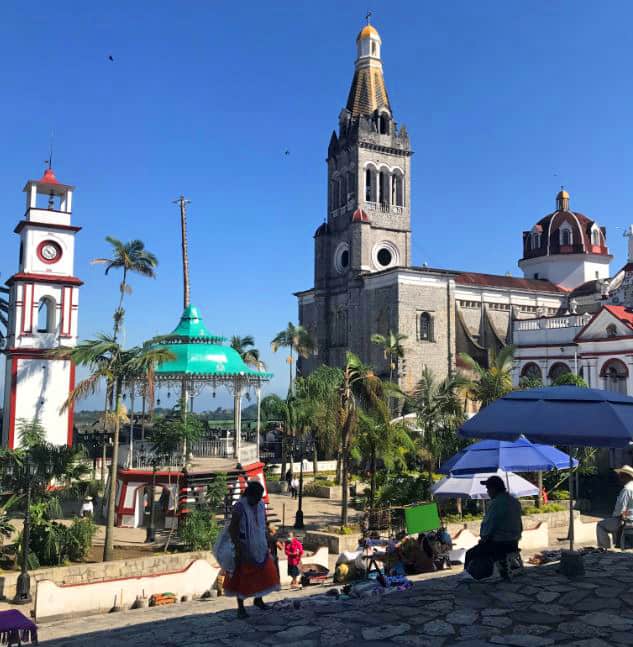
What are your 5 favorite Pueblo Magicos? And what makes them special for you?
This is a matter of taste. I have less interest in historical sites, cathedrals and religious heritage and am more interested in hiking, beautiful natural settings and indigenous peoples with their disparate customs and traditions.
Here are my favorite Pueblos Magicos:
Cuetzalan (Puebla). Cuetzalan has it all. It is situated in the lush green hills a few thousand feet above the Gulf Coast and has a largely indigenous population. The streets are cobblestoned (slippery when wet) and there are two striking cathedrals and other fine architecture. There are nearby ruins, waterfalls, caves, and botanical gardens. Every weekend features a large street market where the artisans and farmers from the surrounding indigenous communities come to town. The famous wild mushroom soup is to die for. My only complaint about this town is that the weather is often cold, wet and foggy.
Zacatlan (Puebla). Also known as Zacatlan de las Manzanas (many of these towns go by less than their full names) this town is gorgeous. Besides the center plaza surrounded by old churches and cathedrals and famous for its unusual flower clock and apple statue, the town is full of artisans, fine local wines, preserved fruits and other yummy victuals and more. Best of all the town is situated along an enormous canyon full of waterfalls and endless vistas. Along the boardwalk are hundreds of yards of beautifully painted walls presenting a mural-like motif. I spent three days there in a comfortable $20 room and was not ready to leave.
Huautla de Jiminez (Oaxaca). Getting there is half the fun, or not. It is a long haul on a second-class bus or minivan, but more than worth the effort. It is isolated, way up in the hills of the northeastern part of the state and gets a ton of rain. But I had good weather. Huautla is one of the most indigenous and least modern towns I have visited. Built into the side of a hill, it is all up and down steps. Its major attraction is the house of the famous shaman Maria Sabina who was instrumental in introducing the Western world to magic mushrooms. Among her many illustrious visitors prior to her death only months short of her one hundredth birthday were the Beatles and the Rolling Stones.
Orizaba (Veracruz). Orizaba is the third most populous Magic Town with over 100,000 inhabitants. It is situated beneath the 16,000 plus foot Pico de Orizaba, the third highest volcano in the Western Hemisphere. There is a great hike up to a viewpoint. Unfortunately the day that I went was foggy and wet. I enjoyed the hike and met some great characters – but no views. There is also an air tram for those less dedicated to climbing hills. The city is impeccable and full of lovely parks and old buildings. A pristine river runs down the from the mountain through the center and features a zoo on either bank. Orizaba also presents about fifteen small thematic museums devoted to such esoteric interests as soccer and beer. An omnibus ticket costs all of fifty pesos, and since the beer museum offers a complementary glass, the entire thing is really almost free. A great destination and like the rest of them barely a foreign face to be seen.
Real de Asientos (Aguascalientes)
This small town is a bit of an outlier. Not only is it unknown to foreigners, it is almost completely unknown to Mexicans. There is no public bus to this place, only collective minivans. What outside visitors it receives are mainly weekenders coming from the state capital thirty-five miles away. I greatly appreciated the amazing tranquility of this place. There are only a couple of small hotels and real restaurants. At one I had a delicious meal of rabbit, Chichimeca style. What I like best about Asientos is its location. The surrounding hills present handsome and scenic high desert vistas. But the town’s water is spring fed and there is a substantial creek. The whole place is lush and verdant and full of flowers, the contrast with the hills astonishing. Asientos has a fascinating old ex-convent (monastery) out of town full of antiquities. I hiked out there and found myself alone, given a full tour by an extremely friendly and knowledgeable girl in her late teens. In town is a good museum built atop some catacombs where the Spanish settlers took refuge during Chichimeca attacks. There is also a large and handsome aqueduct. A great town.
For me there are a few clunkers, but many interesting and beautiful towns on the list. On my runner-up roster are Malinalco and Valle de Bravo (Estado de Mexico), Patzcuaro and Tzinzunzan (Michoacan), Tepotzlan and Tlayacapan (Morelos), Pahuatlan and Tlatlauquitepec (Puebla), Huasca de Ocampo (Hidalgo. The first Pueblo Magico), Calvillo (Aguascaliente), Bernal (Queretaro), Calpulalam de Mendez (Oaxaca), Coatepec (Veracruz), Xixitla (San Luis Potosi) and others.
Many thanks to Chuck for this interview. Loved reading it.
Related: “Retirement Secrets of Mexico”
Related: The Best Pueblos Magicos in Mexico?
Related: Where to retire: Mexico…. or Spain?

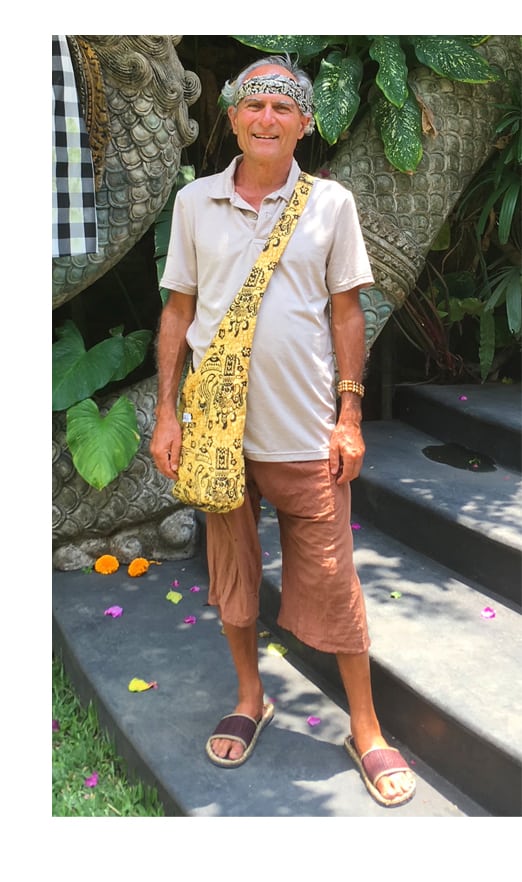
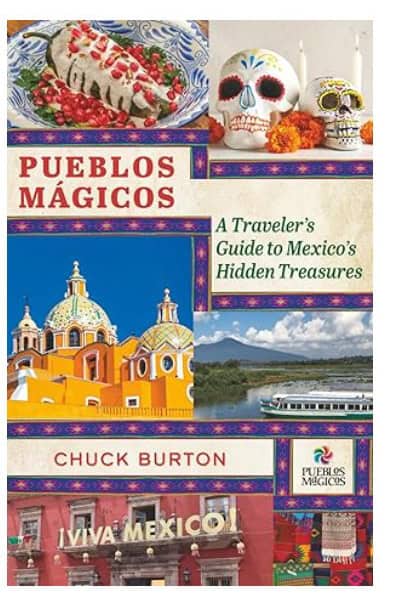
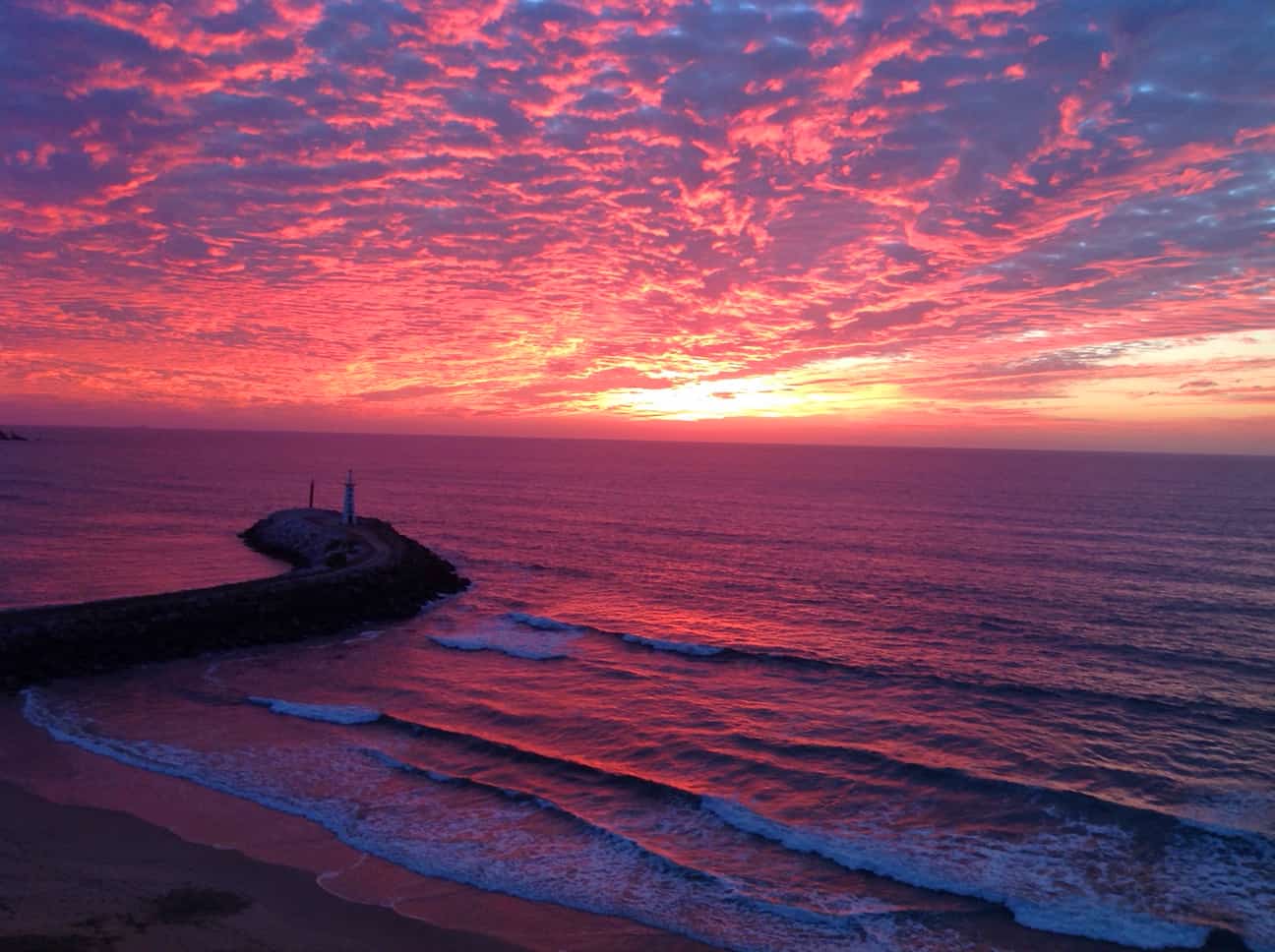

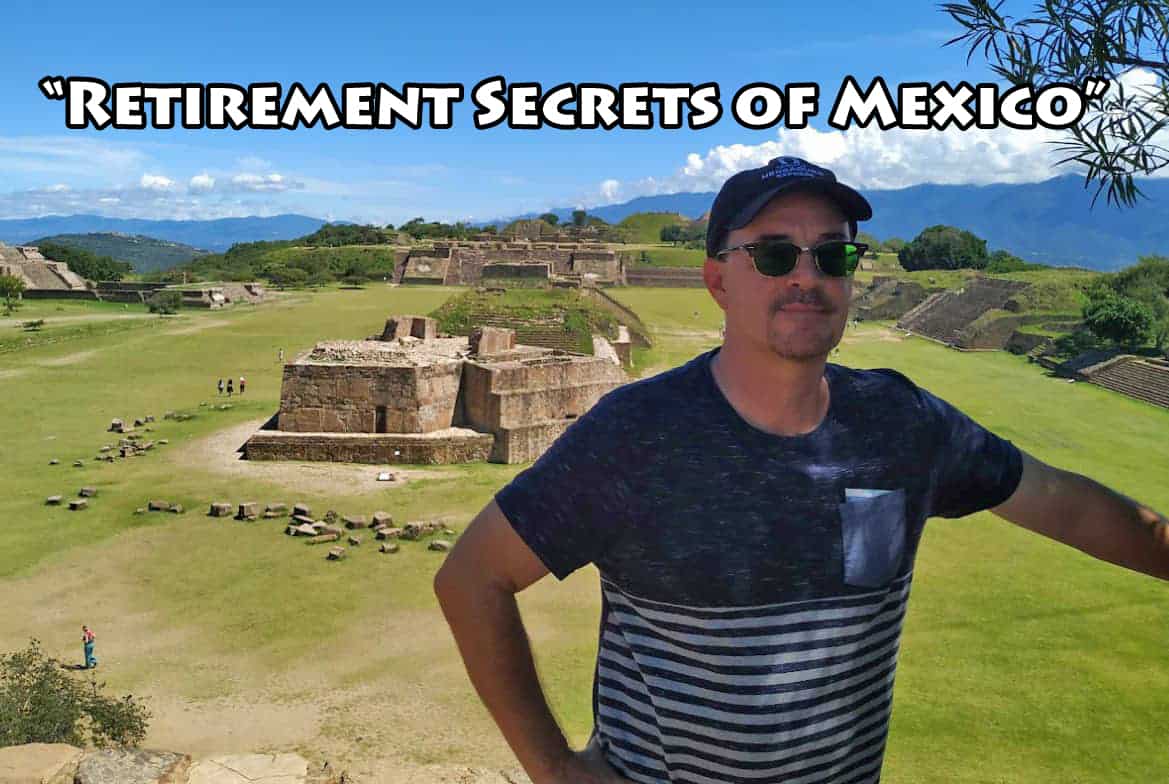

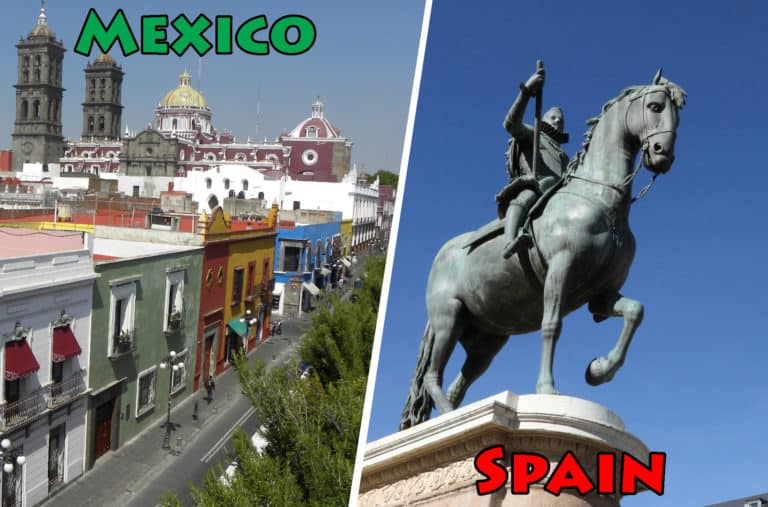
Thank You so much for thé interview. So informative and real. No bull. I want more!
Is the water safe to drink or wash food?
I’ve always felt the same way. Mexico gets a bad rap just because some areas are dangerous, and there’s land grabbing.
I’ve had a place there for 24 years, just a click south of Maz in Sta Cruz de Miramar. It’s time through, catching joy as it flee’s as Blake said. Our 1/2 acre on the boca is getting a new owner hopefully in the near future. I will still visit, plan to rent from now on. All the gardens and fruit trees, lawns, and 3 units are work, and our long term manager has moved. We always rented to snowbirds, so keep the place ready which is more of a commitment than we can honor now. Bye bye Casa Simpatico : /
Hello Chuck, great article on Mexico and your personal views. We have similar tastes and experiences. I also backpacked many countries including SE Asia as you have. Being from the states I skipped right over Mexico for all the wrong reasons years ago. After many years of travel I inadvertently spent some time traveling Mexico. I met my Mexican girlfriend now wife and raise two beautiful girls. We all enjoy travel. Your views on Mexico 🇲🇽 mirror mine and realize there is more than a lifetime of experiences and places to visit right here in Mexico. I seldom visit the US and less every year. I also avoid expat communities here in my new country and relish the local people, art, music, food, culture, and living in the moment. Adios y vaya con Dios.
Hi, Chuck, I’m wanting to move down to the Mazatlan area, and have loved reading your interview. I have a 29′ Class C motorhome and pull my little Toyota truck behind. I’m hoping there might be some RV parks in that area that aren’t too expensive. If you know of any, I would greatly appreciate learning of them, so I can contact them. I plan to be down there in September. Thank you in advance for any ideas you can offer.
There once were about fifteen of them. There are now two in the Cerritos area that might work for you – Las Jaibas and Las Maravillas. There is also one on Stone Island (Isla Piedra) which is a little out of the way. I don’t know its name.
HI Chuck,
You’re male, and almost fluent in Spanish. How would your advice on safety change for a single woman who doesn’t speak more than a few words. May niece, recently divorced, wants to move to Mexico.
Women in relationships can be abused jut like anywhere. But public harrassment is not a part of this very polite culture. What I see all the time are young women walking around after dark in towns and cities unconcerned. And the stuff they wear! As a gringa she might not want to dress in ways that get attention, other than that she should be safer than in the US. Strictly my opinion.
I’m single and travel alone speaking little Spanish. I am cautious just as I am at home or anywhere. I have never been afraid in Mexico, but I also traveled wisely.
Overall, an excellent and informative piece. As a frequent visitor to Mexico since 1967 and a full-time resident since 2011, I would like to take issue with just a few assertions Chuck made. First of all, he states that Ixtapa and Zihuatanejo were created by the Mexican government. Chuck is correct about Ixtapa, but Zihuatanejo existed as a small fishing village long before there was an Ixtapa. Second of all, although there are quite a few Colonial -style buildings in Mazatlan, it was never a Spanish Colonial city per se. And contrary to what Chuck asserts, Mazatlan IS a big tourist destination and has been since the mid 60s. It has an international airport, excellent highway connectivity, and will be visited by approximately 140 cruise ships this season. It hosts the third largest Mardi Gras (known here as “Carnaval”) in the world and is popular year ’round with both national and international tourists—especially for Carnaval, Semana Santa (Easter week), and Semana de la Moto (Motorcycle Week). No skyscrapers in Mazatlan? Well, there are a few, and quite a few more if you count all the 12- 20-story condos going up around town, especially along the Malecon. Last but not least, the whole downtown is NOT “a strollers paradise.” Only Centro Historico qualifies. Downtown is jammed with buses, taxis, motorcycles, push carts, pedestrians, and crowded and rickety, uneven, pock-marked sidewalks. Save the strolling for the beaches and the Malecon!
Ixtapa was developed for tourism, not Zihuat. Yes, I knew that. And I didn’t say that Mazatlan is not a tourist destination, but that tourism is not its raison d’etre like PV. And that is a major difference.
Hmmmm. ” There are many similar locations: Cancun, Cabo San Lucas, Huatulco, Zihuatanejo/Ixtapa. All of these were developed by the government . . .”
Hmmmm #2. “This is not a big tourist destination.”
Well, you got most of it right, Chuck. I salute you.
Sorry, you are still not reading what I wrote correctly. I explicitly compared all those other places to Puerto Vallarta and said, like it, they were mainly government developed. And I explained why Mazatlan was different in that it is a major working city which also has a tourist industry. PV, and Cabo and Cancun would still be largely unknown if not for tourism. Mazatlan would always be an important city, tourism or not.
I know what you wrote; I know what I read. I guess we’ll just have to agree to disagree. Have a great day!
Honestly Pete, you are picking pepper out of fly poop. You made your points and did so constructively, but to belabor the points beyond that seems petty and a waste of time. Write your own article if you want to be perceived as the expert. I give the author credit for the time invested and quality of the content. I have traveled all over Mexico the last 30 years and found most of what was described to be accurate and factual.
What you wrote was correct. It was what we have loved about it for 30+ years. Those other folks are likely newbies that only know it as a bigger destination for northerners. Your article was great. I do agree with the comment about skyscrapers..seems I see a new one everywhere I look.
Thank you for this article. I spent a week in Mazatlan a little over a year ago and loved it. We stayed in a lovely hotel in the historic district and mostly went where we could walk to. We avoided the resort area. We did take a bus to El Quelite for a few hours. I also love magic towns. My favorite is Pátzcuaro.
Last I checked he does have a last name and it’s not “Bolotin”. I’m not sure why his last name is relevant…
Really enjoyed this informative interview. I want to be Chuck someday! I have been researching where to relocate to in Mexico for the past couple of years….and Chuck helped ease my mind about living in Mexico. He reminded me again of why I choose Mexico. Thank you, Chuck!!
Great interview! Informative, no-nonsense, and to- the-point style. Thank you Chuck for sharing your knowledge and experiences. My wife and I winter in Mazatlan and we agree with all your opinions about Mazatlan & Mexico. After reading this article, you have both of us looking to do more exploring other areas in Mexico.
We just got back yesterday from 28 days in Mexico: a week in Mazatlan, a week in Queretero and a return 10-day visit to Playa del Carmen (too hot and humid which led us to QRO and Mazatland!!). We also are disgusted by the negative media/US govt. propaganda about Mexico. Aiming to branch out and visit more places beyond the typical tourist hot spots. Thanks so much for this informative interview. AND what I’d really love to know is: what is Chuck’s pen name? I want to check out his novels!!
I’m sure Chuck will love that. His Amazon links aren’t up yet but I know he’s working on them!
Oh, PLEASE do an an update when Chuck gets published!
I have a dream of completing a fun cozy mystery or two as a legacy for my daughter (filled with family jokes and such that she will recognize.) I’ve had a couple of starts…..got a new chapter written during a month’s stay in Carcassonne, France….
Just now checking out your blog. Hubby and I love to travel and we initially thought we’d retire in Spain (Malaga) but concerned with climate change. France seems to offer the best health care insurance option….but Putin worries us a bit. In the meantime, we’ve been discovering Mexico. When we returned to Portland, Oregon, daughter picked us up at the airport (40+ degree temps, SNOW, rain) en route to our home Washington side.
We’re ready to go back to Mazatlan!!:)
You sound interesting Trishia!
I saw you signed up for the blog. As soon as Chuck gives me his links I’ll shoot you an email 🙂
Hi Trishia!
I just wanted to let you know that Chuck now his his Amazon links up. You’ll find them under his 1st paragraph. My favorite is Full Moon on the Ganga 🙂
Thank you, thank you!!
Hi. I am just finally putting my novels on Amazon – should be soon so keep checking. Under my name.
Thank you, thank you!:)
There once were about fifteen of them. There are now two in the Cerritos area that might work for you – Las Jaibas and Las Maravillas. There is also one on Stone Island (Isla Piedra) which is a little out of the way. I don’t know its name.
Absolutely loved this interview with Chuck! Thank you Chuck for your wonderful synopsis of your life & experience living & traveling in Mexico. My wife & I visited five of Mexico’s cities in 2021 and loved each of them! It was the beautiful country as well as everyday Mexican people who overwhelmed us with their patience & kindness (At times I was so… angry thinking about the negative portrayal the media & gov’t. in the US has fostered over the years). I’ve been researching Mazatlan for a visit (soon, I hope)!